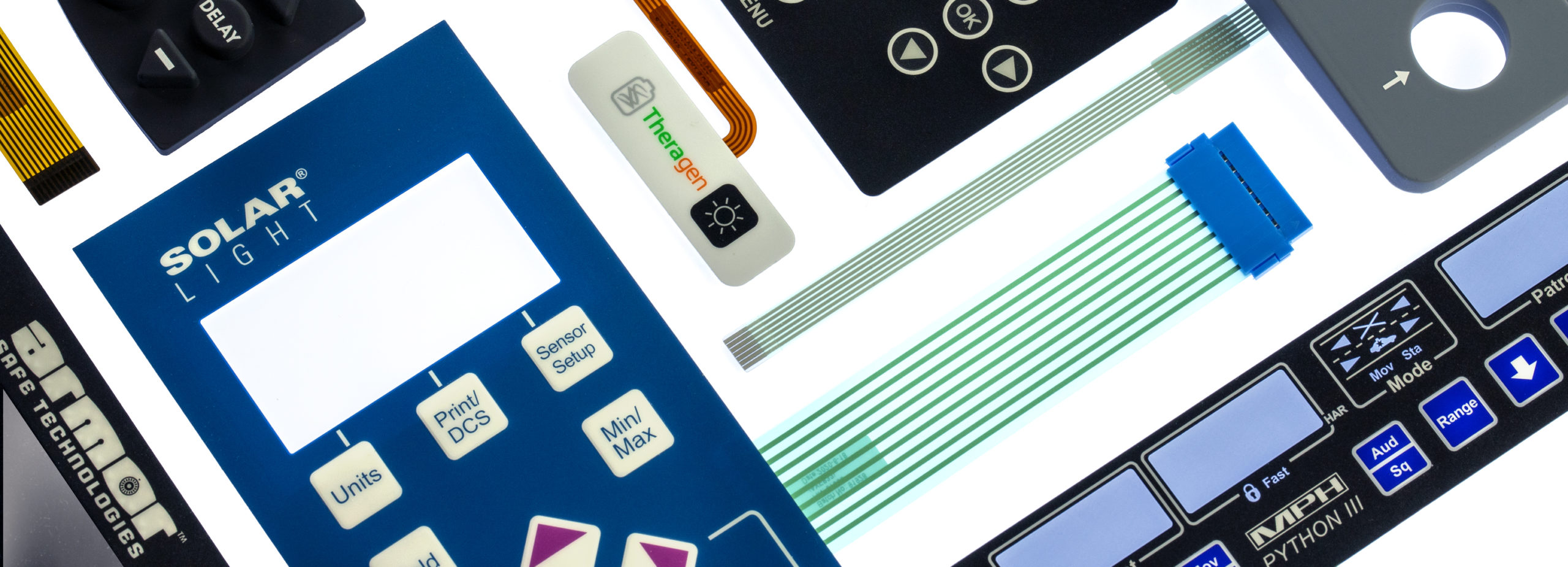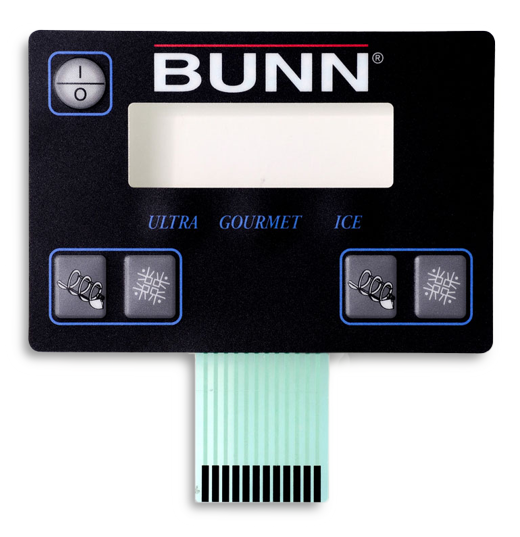Find Out Exactly How Membrane Switches Support Touch-Sensitive Applications with Precision
Find Out Exactly How Membrane Switches Support Touch-Sensitive Applications with Precision
Blog Article
The Ultimate Source on Membrane Layer Switches: Layout, Performance, and Applications
Membrane switches over act as an appealing junction of style and capability, playing a critical duty in modern-day interface throughout various industries. This resource unpacks the important components that contribute to their performance, including visuals overlays and circuit traces, while additionally clarifying the devices behind their pressure activation. As we discover the varied applications of membrane layer switches, it becomes apparent that their versatility and longevity are vital in atmospheres ranging from health care to customer electronics. However, the nuances of their design and functional principles may expose also much deeper insights worth taking into consideration.

Understanding Membrane Layer Buttons
Membrane switches are a kind of interface technology widely made use of in various digital gadgets, defined by their slim, versatile layout and capability. These switches contain several layers that consist of visuals overlays, glue layers, and circuitry, allowing a portable and efficient user interface for customers. They can be located in devices, medical gadgets, and commercial control board, offering a trusted technique for individual interaction.
Among the main advantages of membrane buttons is their capacity to withstand impurities such as dust and wetness, making them suitable for environments where resilience is necessary. Their inconspicuous style enables smooth integration right into various applications, while the personalized graphic overlays enhance customer experience by providing clear visual responses. Furthermore, membrane layer buttons can suit a variety of technologies, such as responsive comments and backlighting, additional enhancing their use.
The manufacturing process for membrane layer changes generally includes display die-cutting, printing, and lamination strategies, making certain precision and consistency in manufacturing. Overall, membrane switches over stand for a efficient and flexible solution for contemporary digital tools, incorporating capability with aesthetic charm in interface style.
Key Elements and Style Aspects
A range of crucial parts and style aspects come together to develop an efficient membrane layer switch. At the core, the visuals overlay serves both aesthetic and useful purposes, using a straightforward user interface while shielding internal elements from ecological variables. The choice of materials, normally polyester or polycarbonate, influences durability and responsive feedback.
Under the overlay, the adhesive layer ensures the button sticks securely to the substrate, which can be steel, glass, or plastic. The spacer layer is crucial, as it maintains the required gap between the overlay and the circuit layers, enabling reliable actuation. Membrane Switches. Circuit traces, generally made from conductive ink or adhesive, are published on an adaptable substratum, enabling electrical signals to be transmitted when stress is used
Design factors to consider also consist of the arrangement of responsive domes or embossing that supply physical responses to the customer, enhancing the overall experience. Furthermore, the layout and spacing of the switches should be optimized for convenience of usage, making certain that customers can browse the interface without effort. In general, these components and design aspects function synergistically to develop a reliable, functional membrane layer button tailored to details applications.
Capability and Procedure System
At the heart of efficient functionality for membrane switches over exists their operational system, which promotes customer communication through an easy yet reliable design. These switches run on the principle of pressure activation, where a user applies pressure to a marked area of the switch (Membrane Switches). This action compresses the layers of the button, finishing an electrical circuit that sends a signal to the linked device
The building and construction generally includes a top graphic layer, an adhesive spacer layer, and a lower circuit layer, which collectively create a robust interface. When pressure is used, the leading layer falls down versus the bottom circuit layer, enabling conductive traces to link. This style not just allows clear tactile responses however likewise ensures sturdiness and integrity, as the buttons are frequently immune to dust and moisture.
Furthermore, the flexibility of membrane layer changes permits combination with various technologies, including LED signs and microcontrollers, enhancing their capability. By giving a structured user interface that minimizes mechanical wear, membrane layer switches over continue to be a preferred option in applications varying from consumer electronics to commercial equipment, learn the facts here now guaranteeing optimal performance and customer satisfaction across varied environments.
Sorts Of Membrane Layer Switches

Another substantial category is lit up membrane switches, which include backlighting to improve exposure in low-light conditions. These buttons are typically used in control panels and dashboards where clear presence is vital.
Moreover, there are custom membrane switches over developed to meet specific dimensional, visual, and useful requirements. These modifications can include one-of-a-kind shapes, colors, and layouts, enabling seamless assimilation right into numerous gadgets.

Applications Throughout Different Industries
Just how do membrane layer switches enhance functionality throughout varied sectors? In the clinical market, membrane switches play a vital duty in devices such as diagnostic devices and patient monitoring systems, where integrity and ease of cleaning are critical.
In the automobile market, membrane layer switches are typically made use of in control panels and control board, providing user-friendly controls that boost chauffeur security and comfort. The customer electronic devices market additionally gains from their adjustable and lightweight features, allowing sleek layouts for smartphones and home appliances.
Additionally, membrane layer switches discover applications in industrial automation, where they add to reliable machinery procedure and tracking systems. Their resistance to dust and dampness makes certain capability popular problems (Membrane Switches). In addition, the food and drink market uses membrane switches for devices control, where health and resilience are essential
Conclusion
To conclude, membrane switches represent an important technology in individual interface modern technology, defined by their special style and functionality. Their key parts, consisting of graphic overlays and circuit traces, add to their functional efficiency through stress activation. The versatility of membrane changes promotes their application across diverse sectors, from medical devices to consumer electronics. This extensive understanding reinforces the significance of membrane switches in boosting item usability and resilience in contemporary technical settings.
Membrane switches over offer as an intriguing junction of layout and functionality, playing a pivotal function in contemporary customer interfaces throughout various sectors.Membrane buttons are a type of customer interface innovation commonly made use of in various digital devices, characterized by their thin, visit site flexible style and functionality.At the heart of efficient functionality for membrane layer switches over lies their operational system, which helps with customer communication through a basic yet reliable layout. These switches operate on the concept of stress activation, where a customer uses force to a marked location of the switch.In verdict, membrane layer switches over stand for a critical technology in user interface innovation, identified by their one-of-a-kind layout and performance.
Report this page